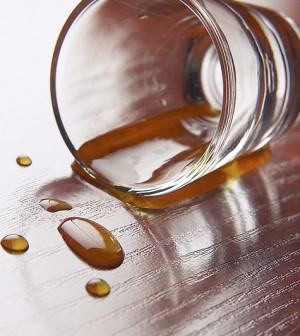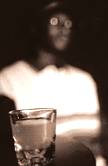- Skip Storing This Everyday Product in the Fridge Door
- Green Tea + B3 Pairing May Boost Brain Health
- Navigating Your Midlife Crisis: Embracing New Possibilities
- City Raccoons Showing Signs of Domestication
- Mapping the Exposome: Science Broadens Focus to Environmental Disease Triggers
- One Week Less on Social Media Linked to Better Mental Health
- Your Brain Changes in Stages as You Age, Study Finds
- Some Suicide Victims Show No Typical Warning Signs, Study Finds
- ByHeart Formula Faces Lawsuits After Babies Sickened With Botulism
- Switch to Vegan Diet Could Cut Your Greenhouse Gas Emissions in Half
Flushed Complexion After Drinking Could Point to High Blood Pressure Risk


TUESDAY Nov. 19, 2013If your face turns red after a few drinks, it could be a sign of added risk for alcohol-linked high blood pressure, new research suggests.
It was already known that excessive drinking is a risk factor for high blood pressure, say researchers reporting online Nov. 18 in the journal Alcoholism: Clinical & Experimental Research. Experts have also known that facial flushing after drinking is tied to higher sensitivity or even intolerance to alcohol.
In the new study, the South Korean research team examined the medical records of more than 1,700 men and divided them into three groups: non-drinkers, people whose faces flushed after drinking and drinkers who didn’t have the flushed-face reaction.
“Flushers” were more apt to have drinking-related high blood pressure than non-flushers, the research found, and the risk of high blood pressure was much higher among flushers who had more than four drinks per week.
“Facial flushing after drinking is always considered as a symptom of high alcohol sensitivity or even intolerance to alcohol, unless a patient is taking special medicine,” study author Jong Sung Kim, head of the department of family medicine at Chungnam National University School of Medicine in South Korea, said in a journal news release.
“The facial flushing response to drinking usually occurs in a person who cannot genetically break down acetaldehyde, the first metabolite of alcohol,” Kim explained.
According to the authors, facial flushing after drinking could serve as a signal for a greater risk of alcohol-linked high blood pressure.
Based on the new data, doctors should “consider evaluating their patients’ flushing response to alcohol, as well as drinking amount, in daily routine care,” Kim said.
More information
The U.S. National Institute on Alcohol Abuse and Alcoholism has more about alcohol and your health.
Source: HealthDay
Copyright © 2025 HealthDay. All rights reserved.










